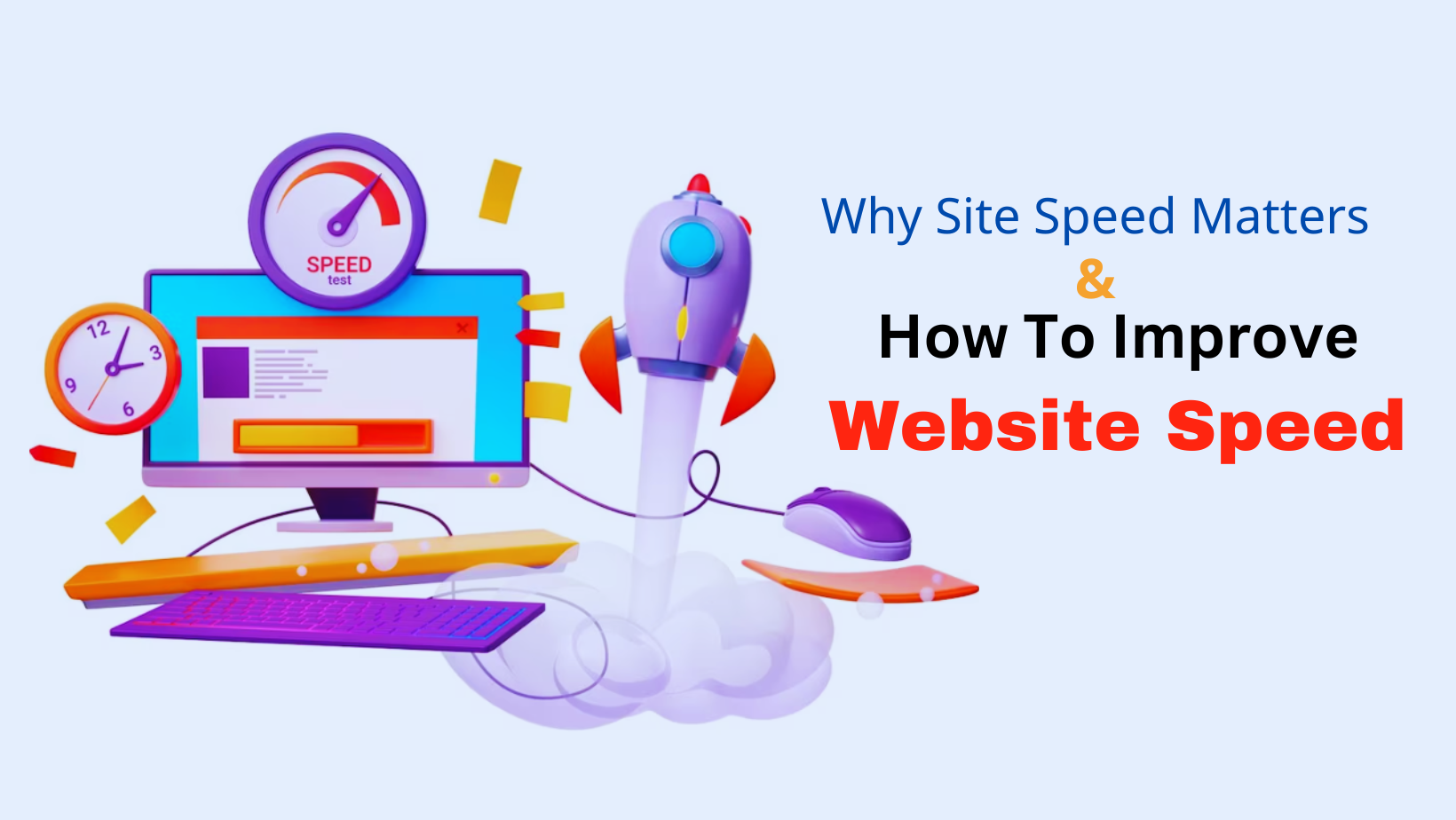
In today’s fast-paced digital world, users expect websites to load quickly. A slow-loading website can negatively impact user experience, increase bounce rates, and even lead to a loss of revenue for businesses. This is why site speed matters, and why website owners and developers should prioritize improving it.
In this blog post, we’ll explore why site speed matters, the factors that affect it, and tips for improving it.
Why Site Speed Matters
Site speed is a critical aspect of user experience, and it can impact several key metrics that businesses care about, such as:
- Bounce rate: Users are more likely to leave a website if it takes too long to load, resulting in a higher bounce rate.
- User engagement: A slow-loading website can negatively impact user engagement, as users may be less likely to browse additional pages or interact with your website’s content.
- Conversion rate: A slow website can also negatively impact conversion rates, as users may be less likely to complete a purchase or fill out a form if they’re frustrated by slow loading times.
In addition to these user experience metrics, site speed can also impact your website’s search engine rankings. Google has stated that site speed is a ranking factor, meaning that slow-loading websites may rank lower in search engine results pages (SERPs) than faster-loading websites.
Factors That Affect Site Speed
Several factors can impact your website’s loading speed, including:
- Hosting: Your website’s hosting provider can impact site speed. Cheaper hosting providers may use shared servers, which can result in slower loading times if other websites on the same server are experiencing high levels of traffic.
- Image size: Large images can take longer to load, impacting your website’s overall speed. Ensure that your images are optimized for the web and compressed as much as possible without losing quality.
- Code and scripts: The code and scripts used on your website can impact loading times. Bloated code or too many scripts can slow down your website.
- Caching: Caching can improve site speed by storing frequently accessed data in a user’s browser or on a server. Websites that utilize caching can load more quickly for returning users.
Tips to Improve Site Speed
- Choose the Right Hosting Provider
Choosing a reputable hosting provider that offers fast and reliable servers can significantly impact your website’s loading times. Consider using a dedicated server or a content delivery network (CDN) to improve your website’s performance.
- Optimize Your Images
Optimizing your images for the web is an essential aspect of site speed optimization. Reduce the file size of your images by compressing them, resizing them to fit the container they’re in, and using the appropriate image file format.
- Minimize HTTP Requests
HTTP requests can slow down your website, as each request requires the browser to retrieve data from the server. Minimize the number of HTTP requests by combining multiple files into a single file and using image sprites.
- Use Caching
Leveraging caching can significantly improve your website’s loading speed. Utilize browser caching to store frequently accessed data on the user’s device and server-side caching to store data on the server.
- Minimize Code and Scripts
Minimizing the amount of code and scripts used on your website can improve site speed. Remove any unnecessary code or scripts, compress your code, and minify your HTML, CSS, and JavaScript.
- Enable Gzip Compression
Enabling Gzip compression can reduce the size of your website’s files, resulting in faster loading times. Most modern web servers support Gzip compression, so check with your hosting provider to see if it’s enabled.
In conclusion, site speed is a critical aspect of user experience and search engine optimization. By prioritizing site speed and implementing the tips and best practices outlined in this article, website owners and developers can improve their website’s loading times and provide a better user experience for their visitors.
- Use a Content Delivery Network (CDN)
A CDN can improve site speed by distributing website content across multiple servers around the world, ensuring that users can access your website from the server closest to them. This can significantly reduce loading times, especially for users accessing your website from distant locations.
- Minimize Redirects
Redirects can add additional HTTP requests, resulting in slower loading times. Minimize the number of redirects on your website by using permanent redirects (301) instead of temporary redirects (302) and avoiding redirect chains.
- Optimize Above-the-Fold Content
Above-the-fold content refers to the content that users can see before they begin scrolling down your website. Optimizing this content can improve site speed by prioritizing the loading of important content. Use lazy loading to defer the loading of non-critical elements until after the above-the-fold content has loaded.
- Regularly Monitor and Optimize Your Website
Website optimization is an ongoing process, and it’s essential to regularly monitor and optimize your website to ensure that it continues to perform well. Use website monitoring tools to track your website’s loading times and identify areas for improvement.
In conclusion, site speed is a critical factor in website optimization and can impact several key metrics, including bounce rate, user engagement, conversion rate, and search engine rankings. By following the tips and best practices outlined in this article, website owners and developers can improve their website’s loading times and provide a better user experience for their visitors.
